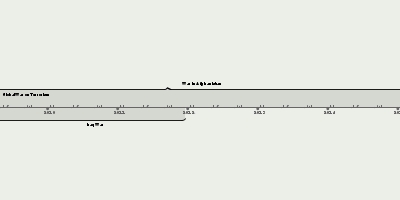War in Afghanistan (7 oct. 2001 – 30 août 2021)
Description:
Following the September 11 attacks, masterminded by al-Qaeda leader Osama bin Laden, US President George W. Bush demanded that the Taliban immediately extradite him to the United States; the Taliban refused. The war in Afghanistan began shortly after with the invasion of the United States–led coalition under the name Operation Enduring Freedom. After toppling the Taliban-ruled Islamic Emirate & expelling the Taliban and their allies, the US-led coalition remained in Afghanistan, forming a security mission (ISAF)—sanctioned by the United Nations—with the goal of creating a new democratic authority in the country that would prevent the Taliban from returning to power. A new Afghan Interim Administration was established, and international rebuilding efforts were launched. By 2003, the Taliban had reorganized under their founder, Mullah Omar, and began a widespread insurgency against the new Afghan government and coalition forces. Insurgents from the Taliban and other Islamist groups waged asymmetric warfare, fighting with guerrilla warfare in the countryside, suicide attacks against urban targets, and reprisals against perceived Afghan collaborators. By 2007, large parts of Afghanistan had been retaken by the Taliban. In response, the coalition sent a major influx of troops for counter-insurgency operations, with a "clear and hold" strategy for villages and towns; this influx peaked in 2011, when roughly 140,000 foreign troops were operating under ISAF command across Afghanistan.A US covert operation in neighboring Pakistan led to the killing of Osama bin Laden in May 2011, and NATO leaders began planning an exit strategy from Afghanistan. On December 28th, 2014, NATO formally ended ISAF combat operations in Afghanistan and officially transferred full security responsibility to the Afghan government. Unable to eliminate the Taliban through military means, coalition forces (and separately, the Afghan government led by Ashraf Ghani) turned to diplomacy to end the conflict. These efforts culminated in the United States–Taliban deal in February 2020, which stipulated the withdrawal of all US troops from Afghanistan by 2021. In exchange, the Taliban pledged to prevent any militant group from staging attacks from Afghan territory against the US and its allies. However, the Afghan government was not a party to the deal and rejected its terms. Coinciding with the withdrawal of troops, the Taliban launched a broad offensive throughout the summer of 2021, successfully reestablishing their control over Afghanistan, including the capital city of Kabul on August 15th. On the same day, the last president of the Islamic Republic, Ashraf Ghani, fled the country; the Taliban declared victory and the war was formally brought to a close. By August 30th, the last American military aircraft departed from Afghanistan, ending the protracted US-led military presence in the country.
Overall, the war killed an estimated 176,000 to 212,000+ people, including 46,319 civilians. In addition, 66,650 people were killed in the related War in North-West Pakistan. While more than 5.7 million former refugees returned to Afghanistan after the 2001 invasion, by the time the Taliban returned to power in 2021, 2.6 million Afghans remained refugees, while another 4 million were internally displaced.
Ajouté au bande de temps:
Date:
7 oct. 2001
30 août 2021
~ 19 years
